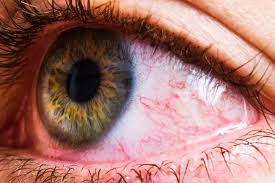The Myopia Awareness Week runs from Wednesday, May 13 to Tuesday, May 19, 2020.
Myopia or what is generally referred to as shortsightedness isn’t a new eye condition to an average person.
Even while in secondary school, students learned about three major eye defects: shortsightedness, long-sightedness, and astigmatism.
In this edition, we are set to discuss myopia, its type, causes, symptoms, and treatment options for the eye defect.
So let us take a look at its overview and dive into one of the most common eye defects
What is Myopia
Also known as shortsightedness or nearsightedness, it is a common eye defect that makes it difficult to focus on distant objects. However, objects that are close by will appear very much clear.
Individuals having this eye defect can treat it by wearing corrective lenses which include glasses or contact lenses.
Individuals having this eye condition may also consider opting for surgery.
Myopia is a refractive error, implying that the eye can�t refract or rather bend light rays entering into the eye properly.
The eye can’t focus on the light, therefore, the objects seen in the distance appear blurry.
Types of Myopia
Simple Myopia
In this type, the eye is healthy, thus the use of contact lenses or glasses can also correct the defect with the individual’s vision.
High myopia
This is a more severe case of myopia. It occurs when an individual develops shortsightedness at a tender age while the condition gets worse as they grow older.
This type of myopia can increase an individual’s risk of developing other eye conditions including cataracts, glaucoma, and retinal detachment.
Pathological myopia
This is also known as degenerative myopia which makes the individual suffer extra eye condition.
People with pathological, or degenerative, myopia will have additional eye conditions.
The eye will also have issues that affect the retina, such as lattice degeneration, retinal atrophy, and Forster-Fuchs� spot.
This myopia can’t be corrected by glasses or contact lenses.
Causes and risk factors
As mentioned earlier, myopia occurs when the eyeball is too long or when the cornea appears too curved.
The light carrying the image will fall at the front of the retina, rather than on it.
The retina needs light to produce images it will send to the brain.
If the light doesn�t focus well on the retina, the result is a blurry image.
Genetics appears to be one of the factors that cause myopia, leading to a high probability of developing myopia.
For instance, children with parents having myopia are highly likely to develop eye defect.
The risk becomes very high when both parents have myopia.
Children who also spend most of their time indoors or much time engaged in up-close work stand a high chance of ending up with myopia.
Myopia develops in childhood, it can also occur in adults when the eye is subjected to visual stress. Diabetes or cataracts can also be the cause. Advanced myopia, however, requires surgery.

